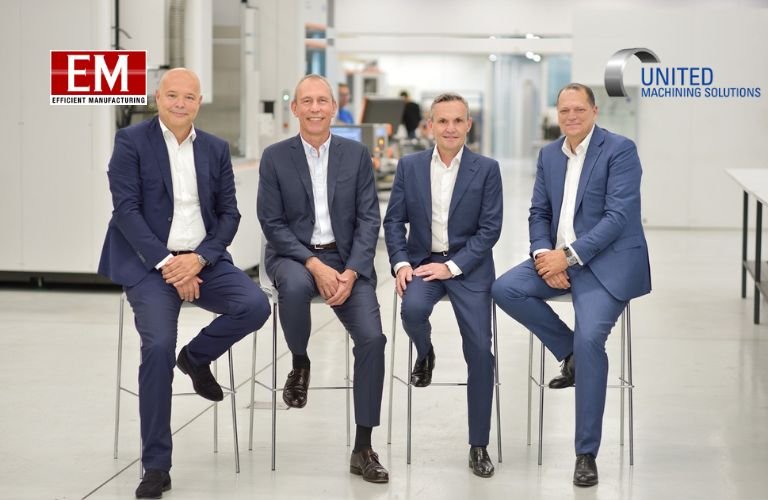| Aerospace OEMs are proactively innovating to meet the increasing demand for aircraft, demonstrating their dedication to advancing technology and production capabilities. This article showcases how the industry prioritises adopting smart manufacturing technologies such as automation, robotics, machine vision, digital technologies, and cybersecurity to address manufacturing challenges and achieve broader factory goals.
Prashant Kumkar,
Practice Head Smart Manufacturing,
Tata Technologies
The aerospace OEMs are proactively engaging in innovation to address the growing demand for aircraft, showcasing their commitment to advancing technology and production capabilities in response to market needs. Aircraft are often highly customised to meet specific customer requirements, resulting in more complex manufacturing and assembly processes that require extensive testing. In the journey of innovation, technology plays a crucial role in making factories and ecosystems smart, enabling them to be adaptive rather than reactive. The aerospace industry is prioritising the adoption of smart manufacturing technologies that can solve both daily manufacturing challenges and broader factory goals.
Revolutionising aerospace factories with Smart Technologies
To smarten factories, robots, Collaborative Robots (Cobots), Autonomous Mobile Robots (AMRs), and Industrial Robots are significantly boosting factory automation levels. While Augmented Reality (AR), Electronic Work Instructions (EWI), and other technologies are empowering operators to perform their tasks more efficiently and easily. This technology enhances the overall aircraft manufacturing process and assembly operations and improves the utilisation of factory resources, tools, and layout space.
The market for Smart manufacturing in the aerospace industry is expected to grow at CAGR 16.6 percent by 2030, reflecting its growing investment in smart manufacturing to cater to growing aircraft demands. As with smart manufacturing, the digital transformation of the manufacturing processes would lead to increased productivity and better-quality output.
Enhancing Safety and Efficiency through Automation
In Aerospace factories many activities are human-dependent, and some of them can be converted into automated ones, focusing on activities that are hazardous for operators and monotonous operations. By automating these activities, aerospace manufacturers can improve safety, increase efficiency, and reduce the risk of human error. Additionally, automation can free up human operators to focus on more complex tasks that require human intelligence and creativity, ultimately leading to higher efficiency and a safer work environment.
Robotics and collaboration in harmony
Industrial robots are crucial for tasks requiring significant payload and reach in aircraft manufacturing. However, their operation areas often require safety measures, such as physical or geo-safety zones, to prevent human interference and ensure a safe working environment for human operators. The integration of Collaborative Robots (Cobots) and Autonomous Mobile Robots (AMRs) is vital for a safe and cooperative factory environment, allowing humans and machines to work side by side without safety barriers. These robots are key to efficiently managing large-scale tasks, such as material handling and assembly. To ensure their precise operation, machine vision technology is employed to accurately direct their actions.
Significance of Quality
Quality is consistently a top priority for any industry, and for the aerospace sector, it is a critical measure. In aerospace, where safety and precision are paramount, maintaining the highest standards of quality is not just a requirement but a fundamental principle. Every component, every process, and every system must adhere to rigorous quality standards to ensure the safety and reliability of aerospace products. As technology advances and the industry evolves, ensuring quality remains at the forefront of aerospace manufacturing practices, but now the time to do quality checks is also getting reduced to match the substantial delivery pipeline.
Machine vision is incredibly useful in aerospace manufacturing, focusing on a wide range of applications. Machine vision systems can inspect the surface defects of metallic parts as well as carbon fibre composite parts, which are heavily used in aircraft. It inspects quality errors with high speed and precision, detecting defects that may not be visible to the human eye. Machine vision systems can accurately measure the dimensions of parts, ensuring they meet the required specifications and are within the specified tolerance. Many small components are being used in aircraft assembly. Machine vision can verify that components are correctly assembled or not within a second, reducing the risk of errors, improving the overall quality of the final product, and saving quality checking time.
Advanced tools and Technologies
To enhance productivity and achieve desired outcomes, aerospace manufacturers prioritise equipping operators with appropriate tools and technologies for creative tasks. This includes Electronic Work Instruction (EWI) and Augmented Reality (AR) HoloLens, which assist operators in tasks requiring skill and precision, streamline workflows, and boost productivity. Such tools not only improve product quality but also enhance efficiency, aligning with the industry’s emphasis on automation and skilled execution.
Electronic Work Instruction (EWI) revolutionises operator guidance by digitising traditional paper-based instructions into screen-displayed formats. It incorporates multimedia features like videos and annotated diagrams to aid operators, enhancing task performance. EWI systems streamline operations, minimise errors, and offer real-time feedback, boosting efficiency. Augmented Reality (AR) overlays computer-generated elements onto the physical manufacturing environment, enriching user perception. Widely adopted in aircraft manufacturing, AR facilitates operator training in both classroom and on-the-job settings, showcasing its adaptability and efficacy across learning environments.
Before components are sent for prototype or manufacturing, verifying product functions and interactions is crucial. Model-Based Systems Engineering (MBSE) plays a vital role, particularly in the aerospace industry. MBSE employs digital models to define, design, and analyse systems before physical prototyping. It streamlines the design process, reducing errors and rework, which is especially valuable in aerospace due to the complexity of systems. Aerospace companies are increasingly adopting MBSE to improve development efficiency.
Importance of Cybersecurity
Considering this journey towards adapting new edge tools and technologies in aerospace manufacturing factories, aerospace factories are increasingly reliant on interconnected systems and digital technologies, making them more susceptible to cyber threats. As the industry embraces automation, data analytics, and Internet of Things (IoT) devices, the attack surface for cyber threats expands. Aerospace companies focus on implementing robust cybersecurity measures to protect their process operations, critical machine status, and sensitive factory data. This includes executing strong access controls, regularly updating software and systems, conducting regular cybersecurity audits, and educating employees about cybersecurity best practices.
Conclusion
By taking all the above points into account, it is evident that the aerospace industry’s focus is on the integration of automation, robotics-Cobotics, machine vision, digital technologies, and cyber security, which will be pivotal in shaping the future of aerospace manufacturing. By embracing innovation and leveraging new technologies, the aerospace industry is enhancing its ability to tackle future challenges and seize growth opportunities.












